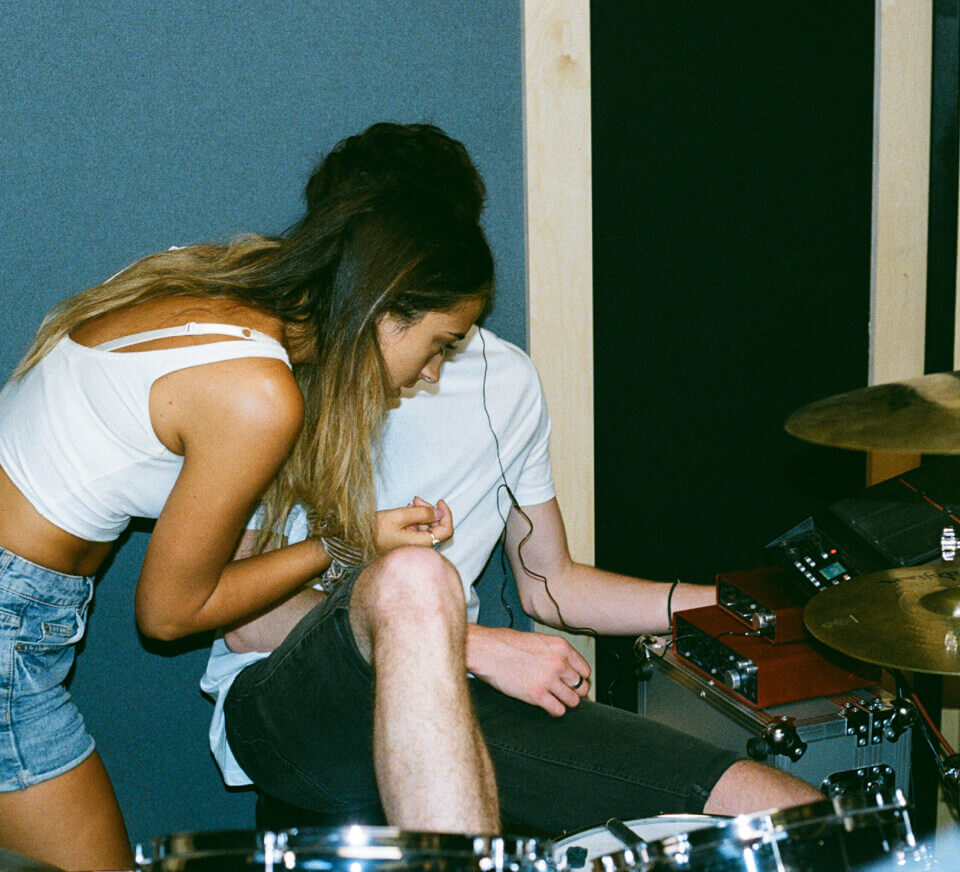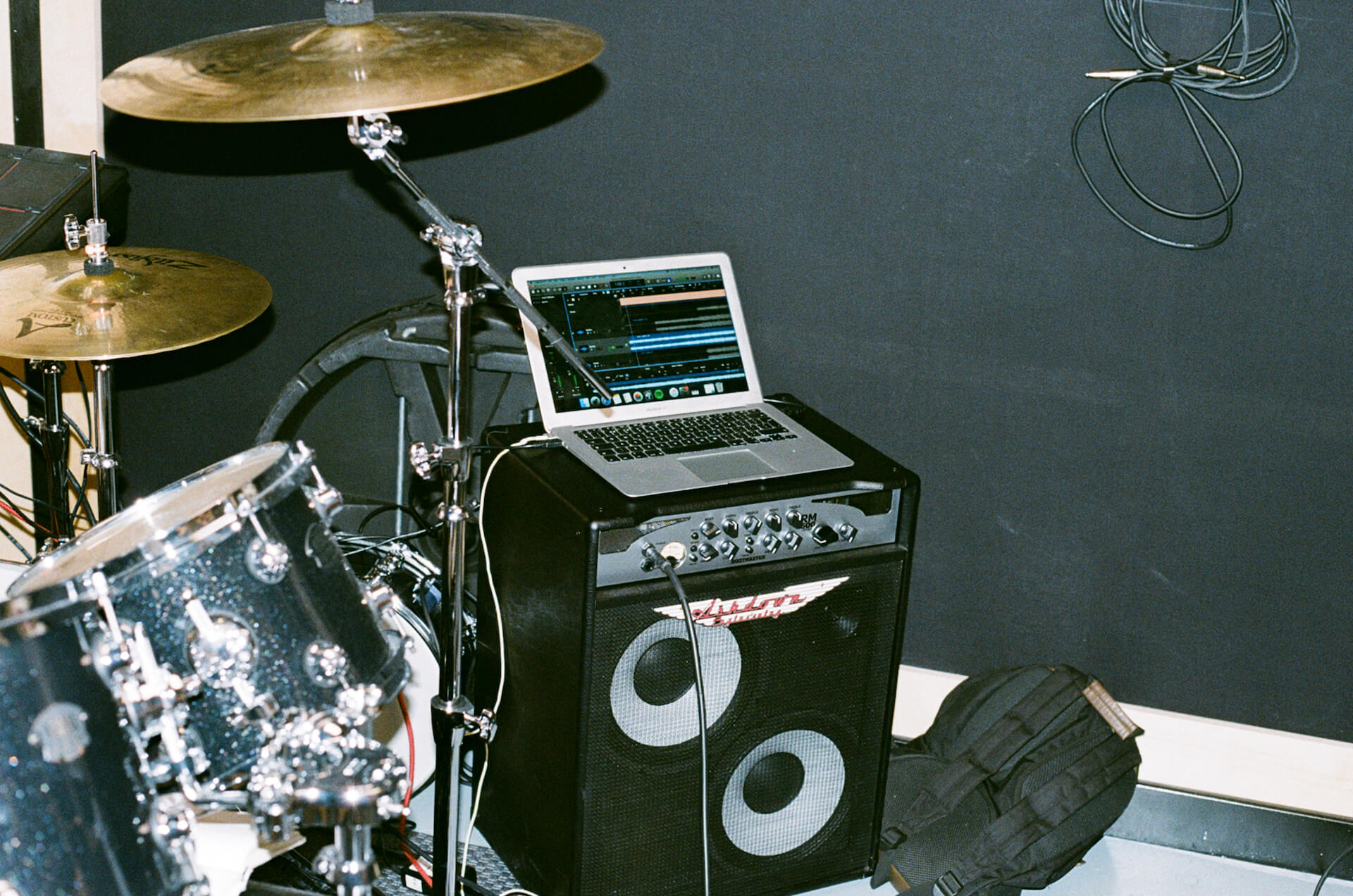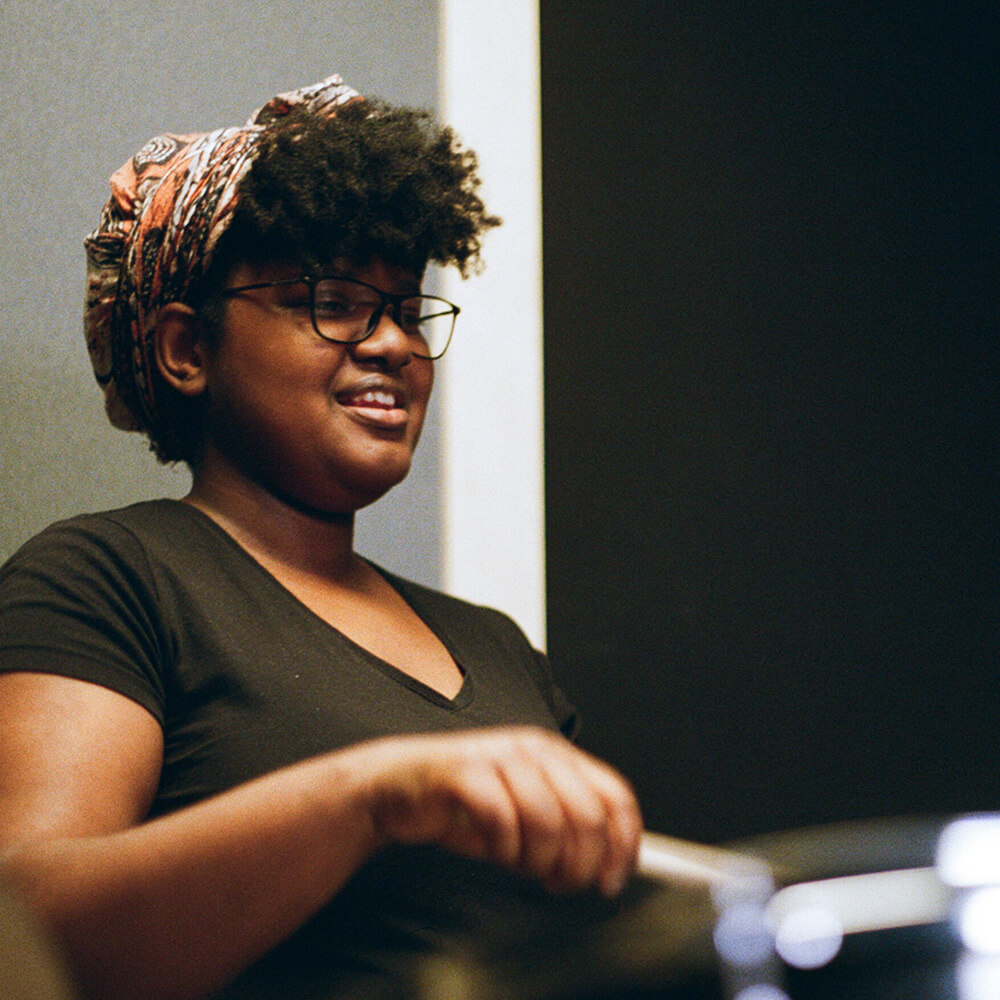
■ Features
Jaleesa Gemerts (Lady Groove) is a music producer, drum instructor and performer who earned her stripes recording with the likes of George Ezra. She’s also a regular in the Pirate drum studios where she rehearses and teaches drum lessons.
To hone your skills as a band, producer, DJ or dancer, book a Pirate.com studio in the UK, US or Germany now.
In this drumming tutorial, Jaleesa demonstrates 3 drum exercises for beginners which will help get you ready to drum with bands, or along to your favourite songs.

If you're brand-new to drumming, it's worth learning how to hold your drumsticks correctly before trying to do anything else behind the kit. My tutorial on how to hold your drumsticks correctly can be found on the Pirate blog.
The three beginner drum exercises we're about to cover contain hi-hats, snares, and bass drums (also known as kick drums).
Before we begin, make sure your hi-hat placement, snare placement and kick placement is correct. If you're using Pirate's drum rehearsal studios the drum kit will already be set up for you. If you're learning at home, I'd recommend checking out some online tutorials on how to set up your drum kit.
Once you're confident your drum kit is set up properly, and you're holding your drumsticks correctly, you're ready to tackle some beginner drum practice routines!

The first basic drum set pattern I'm going to demonstrate is a very useful snare drum exercise and bass drum exercise.
Start off by playing the bass drum and hi-hat together. Next, play the snare drum and hi-hat together. Finally, alternate these combinations.
To recap: play your bass drum and hi-hat together, then your snare drum and hi-hat together and repeat.
When moving your hands, make sure you're moving them up and down in the same rhythmic pattern to avoid clicking your sticks together. You'll find using a metronome will make drum timing exercises much easier. I recommend using The Talking Metronome on YouTube.
When playing your first drum set drill along to a metronome:
When you're practicing, you'll want to start off slow. Once you've got the hang of this motion, try playing it a little faster, and then even faster.
For our second beat, we'll be adding hi-hats to the beat that we learned in Drum Set Drill #1. This means playing a hi-hat between each beat.
When playing your second drum set drill along to a metronome:
Again, when you're practicing, you'll want to start off slow. Once you've got the hang of this motion, try playing it a little faster, and then even faster.
The last beat that we'll be learning is a really useful bass drum exercise. For this one, your snare with hi-hat will stay the same as in drills 1 and 2 but you'll play your bass drum with hi-hat twice.
When playing your second drum set drill along to a metronome:
Once again, try increasing the speed at which you play your third drum set drill day-by-day. In my tutorial video at the top of this article, you can watch the three beats we've just learned played at full speed.

The best way to master the three routines I've demonstrated is to add them to your daily drum practice routine. If you don't have a music practice room at home, Pirate.com offers affordable drum studio rental across the UK, Ireland, Germany and US.
Lastly, if you're looking for more free drum lessons online, check out my tutorial on 5 Essential Drum Rudiments For Beginners on the Pirate blog.